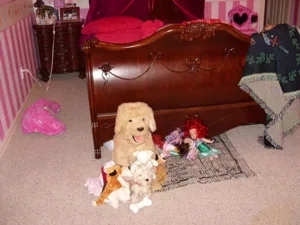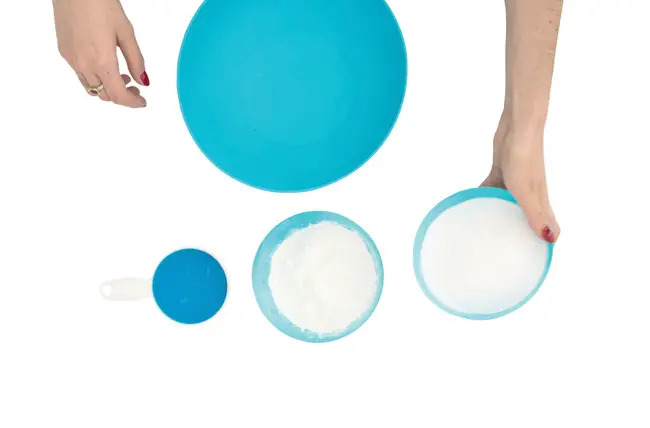Children on the autism spectrum need special kinds of surroundings, says interior designer Carolyn Feder. These kids have sensory overload, she stresses, so they function best in spaces that exude calm. When designing spaces for them, “I like to think that I lessen the visual noise that surrounds us,” says Feder.
The registered interior designer owns Sensory Interior Design, a Dallas based design firm that specializes in organizing, arranging and designing residential (among other) spaces to fit the needs of special needs children. Since autism behaviors can vary according to the individual, Feder often works with the children’s therapists to come up with design concepts that will be of the utmost benefit. She works by phone with out of state clients.
Feder has focused her design talents on special needs since the fall of 2008. “I kind of segued into it,” she says. “My experience had been in remodeling and custom drapery and because of my experience on that end, somebody approached me at a dinner party and asked me if I’d ever designed for special needs kids. I then signed on to design a concept of a classroom for a special needs initiative. I loved it and was in tune with it.” Though not many therapists are aware of this field of design, Feder says, it is beginning to grow.
One of the main design issues to consider for children with autism is color. The primary colors of red, yellow and blue are prevalent in everything from classrooms to therapists’ offices to bedrooms. But Feder says that these colors can be overwhelming and distracting, and suggests that parents consider more tranquil hues when choosing colors for a bedroom. “I tend to use the blues/greens/violets as my color palette when designing, because they are calming, as opposed to the louder primary colors,” she says. “The brain catches these soothing effects on a subconscious level and this really helps to improve behavior.”
She cites an example of a project she recently completed for a young autistic boy who had pronounced sensory integration issues. “His therapist had referred him to me, and it was also discovered that he was very tactile, which is a self-soothing mechanism.” Feder suggested using calming aquatic paint colors in the blue/green family. She also made use of texture, such as fluffy pillows, textured wallpaper and a beanbag chair to appeal to the child’s love of touch. “He really responded positively to the changes to his room.”
Feder believes that it is very important to incorporate soft lighting without glare into the living environments of children with autism. “A fluorescent light is not only troublesome for these individuals because of its color, but because of its sound,” says Julie Liberman, a speech therapist who has worked with Feder. “Individuals with autism typically have heightened sensory systems and this can be distracting.”
Feder prefers full spectrum lighting and halogen lights. “Fluorescent lighting distorts color,” she says.
“I also like to gear my décor toward natural materials. I’ll use wooden blocks instead of plastic, for example,” says Feder also suggests using plants and natural sunlight to further enhance an organic environment, and advises parents to avoid metallic or iron furniture. “Those types of pieces can be very cold in temperature and feel, with no texture,” she says. “I would recommend furniture made from real wood with anything from a medium stain or a hue from blond to black. It can be painted but should have an identifiable grain, as this relates to nature.”
Hardwood floors and rugs that are soft enough to sit on as well as walk on are ideal, she says. Parents can decorate walls with cork bulletin boards. “These also serve as sound proof devices, are made of natural elements and don’t show holes as regular pictures do.” Pictures should be few and large, with nonglare glass. They also should preferably depict natural scenes, and give the impression of windows looking out on nature.
From the Designer’s Notebook:
An intuitive very artistic little girl was not sleeping in her room. Wonder why? Her parents thought it was because she loved her baby brother so much, she wanted to be with him, when in fact his room is large and uncluttered with sand-colored painted walls to match the carpet.

1. This bedroom is a perfect example of over doing it with a child’s favorite color…..from painful bottom (at a kids’s eye level) to top sponged uneven stripes, ballerina border with scalloped edges, sponged walls, and a ceiling that is a completely different pink. The bedding is screaming magenta and orange stripes… harem netting also magenta and orange.

2. Intuitively she arranged her toys with their back to the room, buffered by the wood footboard. Notice the electrical cord exposed and hanging, plastic makeup table in bright pink. There is no place to rest the senses other than the great soft looped sand-colored carpet.

3. Though the room is still in progress, you can see the huge difference.

4. This is a closeup of her new bedding. No surprise she is starting to sleep in there now. It is a greenish aqua – she loves swimming, so this is very soothing and gives her ‘natural references’…. ‘watery’ walls and ceiling.
For more information:
Carolyn Feder, TBAE and TAID, 972-965-2674, [email protected], www.sensoryinteriordesign.com.





















